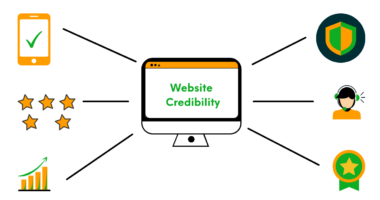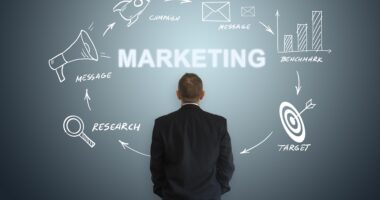Over the past few years, we’ve all heard the saying that the path to success is paved with great content. And while it’s true that great content is critical to building a successful blog, there’s another crucial part of content success that is often overlooked: the conversion funnel.
A conversion funnel is like a funnel cloud. It is the first step in the process of converting your customers into buyers. It shows which customers you got, how many of those customers became buyers, and the path they followed to becoming a buyer. It is a visual representation of your sales process.
The most important question in online marketing is whether you are getting customers or not, and the most important question to ask is what is the best way to get them into your funnel.. Read more about how to build a sales funnel from scratch and let us know what you think.
A conversion funnel depicts the steps of a buyer’s journey from the time they arrive on your page to the time they make a purchase. However, how can you design a conversion funnel and get the most out of this tool? Let’s take a closer look.
Should I Build My Conversion Funnel Using the AIDA Model?
The AIDA model is a well-known method of tracking the client journey. It’s based on the four fundamental stages of the buying process: awareness, interest, desire, and action.
- First, a person learns about your brand and becomes a lead.
- Next, you must pique their interest in your product.
- Desire: Then, by making propositions or strategically putting attractive advertisements for repeat exposure, you should be able to move prospects from simply liking something to genuinely wanting it.
- Finally, you persuade a prospect to perform the desired action, which converts them into a customer.
Because we know that not everyone who sees your website will become a paying customer, we adopt a funnel shape. A traditional-style sales marketing funnel, based on the AIDA model, might look like this:
What is the issue? This is a very rigid and unrealistic way of looking at how people progress through the stages of a sales cycle.
The sales process is rarely linear, and leads are human. People frequently return to earlier phases of the sales cycle before they are ready to close the deal. To put it another way, individuals want nurturing before they will purchase a thing. To turn them into paying customers, you must first understand their behaviors, personalities, and wants as a marketer.
Instead of a conventional sales funnel, you’ll need a conversion-based funnel that looks something like this:
Don’t be put off by the graphic! While you may be tempted to start with a simple sales funnel, starting with a more flexible conversion funnel will boost your chances of success. Let me show you how it’s done in detail.
What Is a Conversion Funnel and How Do I Make One?
Based on a combination of AIDA and less restrictive methodologies, there are nine primary steps to constructing an effective conversion funnel.
1. Create a Funnel to Represent Your Ideal Buyer Journey
The goal of a conversion funnel is to create a smooth buyer’s journey and boost conversions. To enhance your conversions, you must first figure out where you want to start and where you want to end up. To put it another way, you must recognize three things:
- Right now, this is how your typical buyer’s journey looks.
- what you want a prospect to do in the end, or what action you want them to take
- how you can improve your current buyer’s journey to raise the chances of leads becoming paying clients
You can create a conversion funnel once you’ve determined what your final goal is. Visualizing or planning out your funnel can assist you in staying on track later on.
2. Establish Objectives for Each Stage of Your Funnel
Consider your funnel to be divided into three sections: top, middle, and bottom.
Determine what you want to achieve at each level of the funnel; for example, you might want to increase traffic at the top, increase engagement in the middle, and increase conversions at the bottom.
Consider using tools to track your progress and verify you’re fulfilling your objectives once you’ve set some definite targets. To monitor your success rates, you could use Google Analytics or email automation software, for example.
It’s impossible to determine if you’re accomplishing your goals unless you’re clear on what you need from each level of your funnel. Before you create a conversion funnel, take some time to consider your entire goal.
3. Create a Content Strategy for Each Stage of the Sales Funnel
To keep prospects going from one step to the next, each segment of the funnel (top, middle, and bottom) has its own marketing strategy.
Top
The primary goal of the first stage is to raise brand and product awareness. You’re attempting to create buzz and inspire potential customers to discover more about your firm and how your products can benefit them.
Use visually appealing content like videos, short blog entries, and social media posts to introduce your organization and underline your brand story at this early stage.
Middle
Now that you’ve captured someone’s attention, it’s time to earn their trust and demonstrate why they require your product.
Because a prospect may spend some time in this stage, the focus should be on generating useful, educational, and trustworthy information, such as case studies, video tutorials, and downloads.
Bottom
The final step should be focused on persuading prospects to buy your goods, join up for your service, or take any other desired action. Free trials, actionable emails, and CTAs, or calls to action, could all be used as marketing methods at this time.
4. Create Content and Implement Strategies to Raise Awareness
You’re seeking to create buzz around your brand and product at this point in the funnel. Why should a customer be interested in your business? What are the solutions to the problems that your products address? To help you develop a content strategy for this stage, answer these questions.
Also, do some competitor research. Take a look at their landing pages, social media outlets, and blogs to see what you can learn. How do they entice potential customers to come in?
With all of these considerations in mind, here are some ideas for raising awareness and developing relevant content for the initial stage of a conversion funnel.
- In the first case, consider using PPC ads to boost traffic.
- Optimize your content for SEO to ensure that it appears towards the top of search engine results. People will be more likely to find you online if you do it this way.
- Get on Facebook, Twitter, and Instagram, among other prominent social media networks. To increase engagement, post frequently and communicate with your followers.
- Set up a referral program to reward consumers who tell their friends and family about your products and services.
Influencer marketing, holding interviews, developing instructional guides, and designing printable checklists are all examples of other ways to generate interest in your brand.
5. Inspire Curiosity and Desire
While the AIDA model classifies “interest” and “desire” as two distinct outcomes, they are actually the same thing.
The key to generating interest, or developing desire, is to create intriguing content. You raise brand recognition, demonstrate why people “need” what you’re offering, and as a result, they decide they “want” your goods.
How can you develop compelling content to help consumers go through this step of the funnel? Here are a few suggestions.
- To educate your audience, write authoritative blog content. Users are more likely to trust you and spend money on your products if they deem your material valuable.
- Create a YouTube video to demonstrate your product in action. People may picture how the goods will benefit them through video material, making them feel as if they “need” the thing.
- If you have a prospect’s email address, send them customized email material like roundups of your most popular blog pieces, customer testimonials, or helpful suggestions and advice.
You can also increase interest by launching a podcast, writing product guides, operating a free trial program, or providing product samples.
6. Motivate Users to Take Action
Your goal at the bottom of the funnel is to encourage a lead to take the appropriate action and convert them into a customer. While you may be able to bypass this stage of the funnel if it suits your needs, there are some ways to improve your strategy for this stage.
Download a PDF Document
Put together some useful information in a PDF download and provide it to them in exchange for their contact information. To entice customers to actually download your document, make sure it offers to answer frequent questions they may have.
Here’s an example from LegalSuite, which provides legal services. Their clients frequently seek assistance in improving the efficiency of their operations. LegalSuite provides a free eBook with tips on how businesses improve the efficiency of their legal operations.
What’s the catch? Prospects must give some contact information so that LegalSuite can contact them:
This is an excellent example of how to persuade someone to do something without being overbearing.
Add a Call to Action (CTA) to Resources That Are Relevant
CTAs make it clear what action you want readers to take, so include them in your content.
Give your CTAs a sense of urgency at this level of the funnel because you’re trying to persuade clients to take a final action to finish the cycle. Emphasize how your product can help them solve their problem and why they should take action right away.
Make it easy for customers to take action by placing the CTA somewhere visible, such as at the top of a landing page, the end of a guide article, or in a bright, clickable button at a key point in a YouTube video.
Finally, test your CTAs to see which strategy resonates the most with your target audience.
Send Emails With a Purpose
Great marketing is, in many ways, about assisting people in assisting themselves.
Send them emails that are clear, short, and actionable, stressing how your products or services may help them address their problems.
Make sure there’s a clear call to action so potential customers know what you want them to do.
Customer Testimonials Should Be Included
Did you know that 72% of customers will wait to buy something until they’ve read some reviews? Add some testimonials to your page to give those clients the confidence they need to take the last step.
You may either ask customers for reviews or search through your existing reviews on social media platforms like Facebook and LinkedIn and get permission to include them in your material.
When it comes to testimonials, where should you put them?
Everything is dependent on your target demographic, brand objectives, and marketing approach. For instance, you could:
- On your landing page, put some quotes from positive reviews.
- add a Trustpilot widget on your page so that potential customers may see your reviews before making a purchase.
- link to videos of satisfied consumers utilizing your stuff (don’t forget to thank them for trying it out!)
Other Thoughts
Finally, to nurture leads into paying customers, you might offer further incentives such as free trials, rival comparison guides, demo videos, and product samples.
7. Maintain Customer Relationships
Finding customers isn’t the only aspect of good marketing. It’s also about keeping them. This is why.
Isn’t that fantastic? Here are some ideas for keeping those all-important loyal clients happy.
Next-sell
Next-selling is when you contact a consumer after they’ve made a purchase and offer them a similar product with a tempting price. This not only allows you to engage with your customers and make them feel important, but it also gives you the opportunity to potentially raise revenue.
Let’s say you want to discover if people who buy coffee machines are more likely to buy a toaster at a discount. You can offer a discount code for toasters to clients who purchased a coffee machine, while sending a full price ad on toasters to a control group.
Next-selling can offer you with valuable information for creating efficient funnels.
Establish Loyalty Programs
Loyalty programs are critical to any client retention strategy, with 81 percent of millennials spending more money as members of a loyalty program. However, because loyalty programs aren’t new, you’ll need to get inventive if you want to create a successful one.
Consider the following when designing your own program:
- personalisation at a high level
- allowing users to choose how they want to use their reward points
- providing users of loyalty programs with additional advantages and privileges
Customers of Amazon Prime, for example, benefit from free same-day delivery, unique discounts, and access to members-only shopping events.
Members of the Starbucks Rewards program pay via the Starbucks app and earn points toward rewards such as free food and drinks. What’s really cool about this plan is how it’s all consolidated through the app, which means Starbucks can get access to a lot of data about user activity to help inform their marketing strategy:
Make your loyalty program work for you by tracking consumer preferences and purchasing patterns.
Updates on Products
You’re keeping up with shifting client wants and expectations when you update your products. You’re demonstrating to your regular customers that you appreciate their continuous support.
For example, based on customer feedback, you might be able to fix a bug in an app. You might also use an add-on to speed up a program download.
In a nutshell, product upgrades are an excellent approach to enhance the user experience.
Other Methodologies
How else are you going to keep those crucial customers? You could, for example, use the following marketing strategies:
- presenting exclusive events for members
- distributing exclusive emails
- Organizing competitions or prize draws
- establishing a customer service department Feeds via RSS
8. Increase the Number of Customers
Finally, remember to take advantage of your current clients by encouraging them to make more purchases. There are a few options available to you, so here’s a list of the top ones.
Cross-sell
Cross-selling is when you look at a customer’s most recent purchase and suggest things that they might like. Alternatively, you may offer them other things that complement the item they’re now purchasing during the sales process.
Let’s imagine someone purchases a laptop from your website. You might also propose a charger or a laptop case to go along with their purchase as part of your sales funnel.
Here’s an actual REI Co-op example. Let’s say a prospect wants to see a set of strength trainers. A “people also viewed” list appears beneath the product listing, highlighting similar products the lead might be interested in:
It’s not a forceful approach, but it does cultivate leads in the right direction.
Upsell
Upselling is the practice of recommending a more expensive version of an item or service to a customer.
If someone chooses a free subscription to your service, for example, you might show them the cheapest premium subscription option.
- It’s helpful to compare items or services side by side while upselling.
- However, if a product is significantly more expensive than what the potential buyer desires, don’t try to upsell it. Otherwise, the plan can backfire!
When it comes to upselling, just remember to avoid being overly pushy at all times.
A fantastic example comes from Best Buy. The consumer examines a low-cost MacBook Air. They can see other more expensive MacBook items above the product, one of which has a tempting discount linked to it:
The marketed products aren’t significantly more expensive than the seen product, and it’s a nice, subtle example of upselling.
Other Approaches
You can also use the following ways to expand your consumer base and expand your business:
- providing loyal consumers with discounts
- making your marketing emails more personalized
- more promo codes are being issued
Try out a few different techniques to see which ones your customers respond to the best.
9. Troubleshoot Funnel Issues
There is no such thing as a perfect funnel in reality. If your funnel, on the other hand, is underperforming, it could be due to frequent mistakes like:
- omitting a clear call to action
- omitting to begin with a strong brand message
- using an excessive number of steps in your funnel
- interpreting your funnel analytics data incorrectly
- a lack of follow-up on leads
You can use A/B testing or an analytics tracking tool like Google Analytics (GA) or Hotjar to figure out why your funnel isn’t performing well.
You could also engage in some lead outreach. Send out surveys or request feedback on your website’s user experience, and always consider negative criticism while refining your funnel. They’ll tell you exactly what your target audience wants and doesn’t want.
Optimizely’s Conversion Funnel Tracking
Want to try out different funnel versions and see how they perform? Try Optimizely out.
It’s not difficult to use. After you’ve signed up, go to your “Experiments” dashboard, click “Create New,” and choose an experiment to execute, such as A/B testing or a customization campaign:
You may follow your experiments from your dashboard and make whatever changes best suit your marketing strategy after you’ve created them. You may, for example, improve your CTA or highlight a new product. You can even test numerous variations at the same time to see which one works best.
Optimizely can assist you in achieving any conversion goal. If your marketing budget allows, sign up for a free edition or upgrade to a paid subscription with more sophisticated capabilities.
How to Use Google Analytics to Track Your Conversion Funnel
Another useful tool for funnel tracking is Google Analytics. With GA, you can simply follow clients from the moment they arrive on your page to the point where they abandon or finish their transaction.
- Set up some conversion goals once you’ve decided which website you want to track.
- Go to “Views” from the “Admin” menu, then “Goals:”
- Click “New Goal” and follow the instructions to create the goal you want.You should pick a “Destination” aim, such as signing up for a newsletter, because we’re trying to visualize a funnel.
- Return to the “View” menu in the “Admin” area, pick “Reports,” and then “Goal Flow” from the “Conversions” menu to see your funnel.From here, you can see where users are exiting your funnel or looping back to different phases.
Frequently Asked Questions about Conversion Funnels
What are the AIDA model’s four stages?
“Attention,” “Interest,” “Desire,” and “Action” are the four stages. You’re attempting to pique the customer’s curiosity, persuade them to want the product, and persuade them to do the appropriate action.
What exactly is the distinction between goals and funnels?
The goal is the end result you want to attain, such as a consumer completing a sale. The prospect’s journey to this goal is represented by the funnel.
What image do you have in mind when you think of a funnel?
To begin, look into funnel visualization tools such as Google Analytics.
What exactly is the function of a funnel?
The pathways visitors take from browsing your website to become paying customers are depicted in a conversion funnel.
Conclusion of the Conversion Funnel
Consider your conversion funnel to be a dynamic activity. Just as your consumers’ wants and needs evolve over time, so should your funnel strategy and goals.
When you endeavor to provide your clients with the user experience they desire, you will not only establish a loyal customer base, but you will also stand out from your competition.
Have you already created your first conversion funnel?
- Unlock large volumes of SEO traffic with SEO. Take a look at the outcomes.
- Content Marketing – Our team develops incredible content that is shared, linked to, and drives traffic.
- Paid Media – successful paid solutions with a measurable return on investment.
Have you ever wished you could just click a button and have your current website magically multiply your profits, without doing anything else? Here’s what that button is. Background: Every year, I collect hundreds of post ideas from various sources, such as social media, conferences, and industry groups. I then use my own copywriting skills to adapt and implement the ideas into a useful post. (If you want to learn how to write, check out my free course: How To Write Better.). Read more about how to create a sales funnel for free and let us know what you think.
Frequently Asked Questions
How can I increase my funnel conversion rate?
The best way to increase your conversion rate is to optimize your website for conversions. This includes adding a call-to-action button, optimizing the design of your landing page, and making sure that you have clear information about what you are offering.
How do you build a powerful marketing funnel?
The marketing funnel is a process that helps you to reach your target audience, and then convert them into customers. It starts with awareness, which is the first step in the process. Then comes interest, followed by consideration, and finally action.
How much should I charge to build a funnel?
A funnel should be built for around $100.



